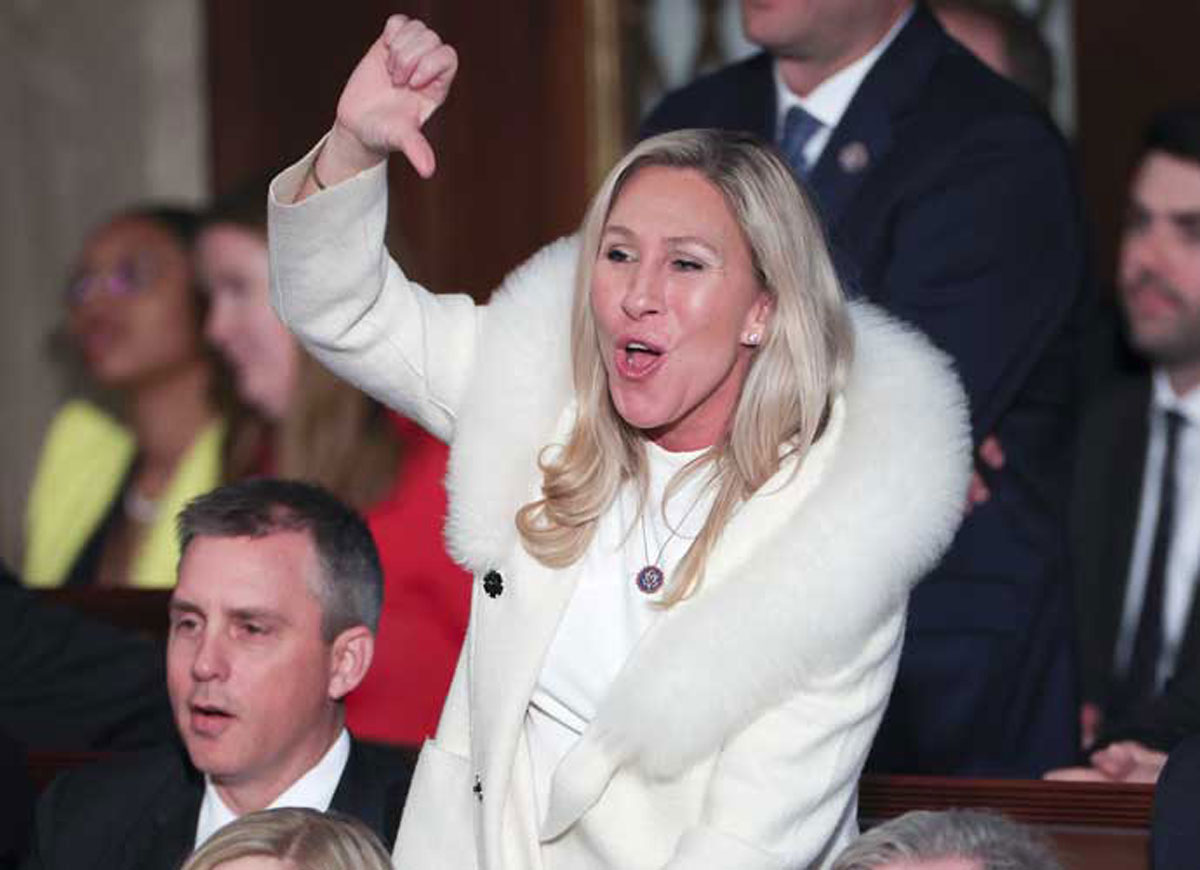

WASHINGTON, DC - FEBRUARY 07: U.S. Rep. Marjorie Taylor Greene (R-GA) gives a thumbs down during President Joe Biden's State of the Union address during a joint meeting of Congress in the House Chamber of the U.S. Capitol on February 07, 2023 in Washington, DC. The speech marks Biden's first address to the new Republican-controlled House. (Photo by Win McNamee/Getty Images)
Following President Donald Trump’s “Liberation Day” tariff announcement in April, members of Congress were unusually active in the stock market.
From April 2, the day Trump announced the tariffs, to April 8, the day he paused the tariffs for most countries, a number of lawmakers and their families had reported over 700 trades. In the entire month of April, members of Congress and their family members made a total of 1,865 trades.
The “Liberation Day” tariffs, which included “reciprocal tariffs,” imposed a universal 10% tariff on all imports from outside of North America to the U.S. and country-specific tariffs to combat what the administration claimed to be unfair trading practices from certain countries. Trump called the policy announcement a “declaration of economic independence.”
In response, the stock market experienced a surge in activity by Congress members.
Subscribe to our free weekly newsletter!
A week of political news in your in-box.
We find the news you need to know, so you don't have to.
According to the study from the Wall Street Journal, Reps. Ro Khanna (D-California) and Rob Bresnahan (R-Pennsylvania) made the most trades on the market. Both legislators have publicly called for stock-trading bans for lawmakers.
Rep. Marjorie Taylor Greene (R-Georgia) was also notably active on the market, spending nearly $28,000 on various companies that performed well in the aftermath of the pause on tariffs.
Given the disclosure rules on trading for members of the House, there’s no way to determine whether congressional members made or lost money in the onslaught of trades made in April.
Numerous efforts have been made to ban legislators from trading in the stock market, with the primary concern being the perceived advantage they gain due to access to insider information.
In the two days following the “Liberation Day” tariff announcement, the S&P dropped over 4.5% each day. However, after the pause, the NASDAQ experienced a 12% increase, its largest gain in over two decades.
Based on which trades were made, lawmakers, such as Greene, may have seen their investments turn out to have positive value once the market rebounded after Trump implemented the pause.
In an interview with Time, Trump said he would “absolutely” sign a bill that would bar lawmakers from trading individual stocks.
Earlier this month, Tulsa Mayor Monroe Nichols unveiled a $105 million city-backed plan aimed at…
A majority of Democrats joined Republicans in the House of Representatives to crush the bid…
Rep. Andy Ogles (R-Tennessee) said that New York City Democratic mayoral candidate Zohran Mamdani should…
On Tuesday, the Trump administration rescinded health guidance that the Biden administration established in 2022.…
Kilmar Abrego Garcia, a Maryland resident mistakenly deported to El Salvador in March, was returned…
On Friday, the Supreme Court ruled that lower courts can no longer grant nationwide injunctions,…